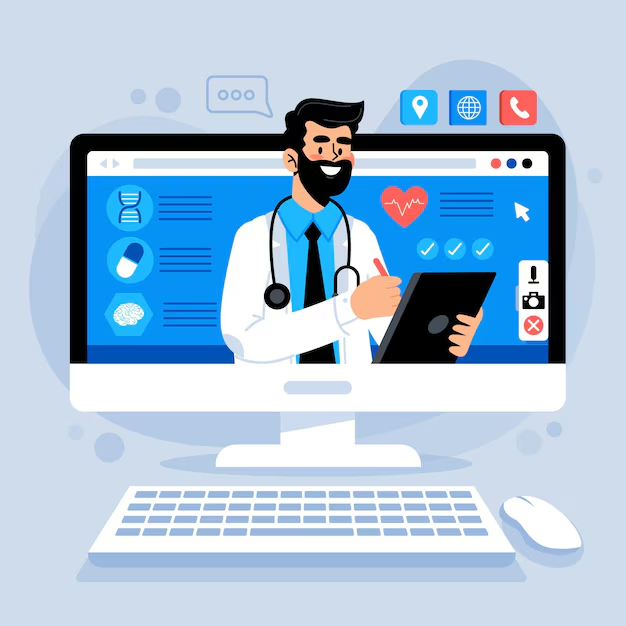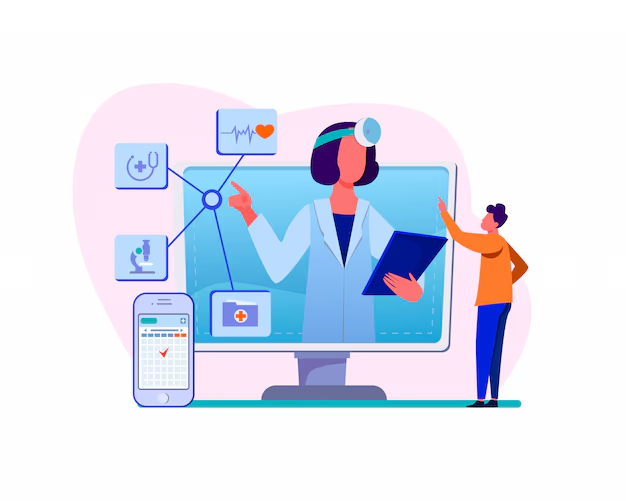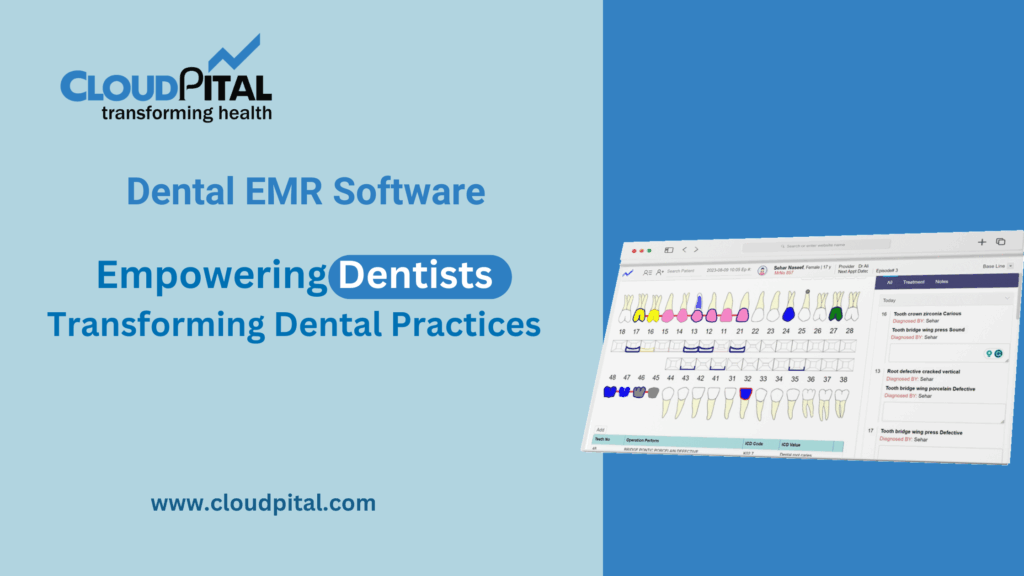Cloudpital # 1 is one of the top Telemedicine by making medical care more accessible, efficient, and affordable. With the development of digital technology, healthcare professionals can now diagnose, treat, and monitor patients remotely, enhancing patient outcomes overall. The success of telemedicine depends on a number of technologies that facilitate secure, real-time, and effective communication between patients and healthcare professionals. This article discusses the major technologies that power telemedicine today.
Click to Start Whatsapp Chatbot with Sales
Mobile: +966547315697
Email: sales@bilytica.com
Cloudpital # 1 Telemedicine

Video Conferencing Technology
Video conferencing serves as the pillars of Telemedicine, allowing physicians and patients to have face-to-face consultations. High-definition video calling provides for clear vision, allowing physicians to make virtual checks accurately. Companies like Zoom for Healthcare, Microsoft Teams, and bespoke telehealth solutions combine safe video conferencing with medical files and diagnostic functionalities, creating an easy experience for both providers and patients.
Electronic Health Records (EHR) and Electronic Medical Records (EMR)
Electronic Health Records (EHR) and Electronic Medical Records (EMR) systems store and manage patient data digitally. These records include medical history, treatment plans, prescriptions, and test results. Cloud-based EHR solutions allow healthcare providers to access patient data from anywhere, ensuring continuity of care. Integration with telemedicine platforms enhances efficiency by allowing real-time updates during virtual consultations.
Artificial Intelligence (AI) and Machine Learning (ML)
AI and ML are transforming telemedicine by streamlining processes, enhancing diagnostics, and tailoring treatment plans. AI-powered chatbots and virtual assistants assist in patient triaging by collecting symptoms and offering initial diagnoses prior to a live consultation. Machine learning algorithms process large amounts of data to aid in the diagnosis of diseases, forecast patient conditions, and suggest treatment options.
Internet of Things (IoT) and Wearable Devices
Wearable IoT-based devices are most essential for remote monitoring of patients. IoT devices like smartwatches, ECG monitors, glucometers, and blood pressure cuffs send live health-related information to the physicians. IoT-based continuous monitoring makes doctors detect abnormal conditions before complications arise, saving them from hospitalization. Telemedicine becomes even more improved by using data-based, predictive care through IoT.
Remote Patient Monitoring (RPM) Systems
Remote Patient Monitoring (RPM) leverages IoT devices and Telemedicine to monitor patient vitals, including heart rate, oxygen saturation, and blood pressure. RPM systems are critical in the management of chronic diseases such as diabetes, hypertension, and heart disease. Doctors can keep track of patients from a distance, modify drugs, and take action quickly if any deviations are noted.

Cloud Computing and Data Storage
Cloud computing supports safe storage and access to patient data, ensuring ease of collaboration between medical professionals. Health Information Management cloud platforms enable streamlined data exchange, instant access to patient records, and scalable data storage. Care providers can utilize cloud infrastructure for HIPAA-enabled security and shield sensitive health information from intrusions.
Mobile Health (mHealth) Apps
Mobile health apps give power to the patients by making virtual consultations, health tracking, medication reminders, and wellness monitoring available. Mobile apps like MyChart, Teladoc, and Amwell combine telemedicine capabilities with EHR systems and make healthcare universally accessible at all times and anywhere. Patients can book appointments, get prescriptions, and interact with physicians using convenient mobile interfaces.
Secure Messaging and Chatbots
Secure messaging systems provide real-time connectivity between healthcare workers and patients. The systems include encrypted voice, text, and video messaging for patient confidentiality. Chatbots integrated with artificial intelligence help address generic medical questions, appointment booking, and walking the patient through the symptom checking, thus taking away from healthcare practitioners.
Blockchain Technology
Blockchain provides the safety and integrity of medical records in the form of decentralized and unalterable storage of data. It increases the privacy of the patient, makes data breaches impossible, and makes it easy to share medical records within healthcare networks. Smart contracts based on blockchain automate insurance claims and billing and simplify administrative activities in telemedicine.
Augmented Reality (AR) and Virtual Reality (VR)
AR and VR technologies complement telemedicine by delivering immersive experiences for remote surgery, training, and rehabilitation. VR therapy is employed in the treatment of mental illnesses, pain relief, and physical rehabilitation. AR-based applications enable surgeons to see patient anatomy in remote consultations, enhancing surgical planning and precision.
Telepathology and Teleradiology
Telepathology and teleradiology enable experts to remotely examine digital pathology slides and radiology images. High-definition image-sharing platforms permit pathologists and radiologists to diagnose diseases like cancer, fractures, and infections without physical presence. AI-based image recognition also reinforces diagnostic precision.
Cybersecurity Measures
As more Medical EMR Systems is being adopted, cybersecurity has gained utmost importance. Encryption, multi-factor authentication, and biometric identification safeguard patient data from hacking and cyberattacks. HIPAA-compliant telemedicine platforms and other regulatory frameworks safeguard data confidentiality and privacy
Conclusion
Telemedicine is progressing, fueled by technological innovations that improve accessibility, efficiency, and patient outcomes. From AI and IoT to blockchain and 5G, these technologies are redefining the future of healthcare. As telemedicine adoption increases, investing in secure and innovative solutions will be the key to providing high-quality virtual care. With a robust technological backbone, telemedicine will continue to close the gap between patients and healthcare providers, making quality healthcare available to everyone.
Click to Start Whatsapp Chatbot with Sales
Mobile: +966547315697
Email: sales@bilytica.com
What technologies are used in Telemedicine? similar software solutions prices were updated on 2025-10-29T16:13:13+00:00 in Saudi Arabia in Mecca, Medina, Riyadh, Khamis Mushait, Yanbu, Jeddah, Dammam, Unaizah, Uqair, Ha’il, Ta if, Al Bahah, Dhahran, King Abdullah Economic City, Najran, Diriyah, Qatif, Khafji, Jubail, Abqaiq, List of Cities and Towns in Saudi Arabia, Ras Tanura, Turubah, Jazan Economic City, Knowledge Economic City, Medina, Khobar, Abha, Tabuk, Saudi Arabia, similar software solutions prices were updated on 2025-10-29T16:13:13+00:00 We also provide in Saudi Arabia services solutions company in Hafar Al-Batin, Udhailiyah, Al-Awamiyah, Hofuf, Hautat Sudair, Buraidah, Tayma, Duba, ‘uyayna, Saihat, Al-Kharj, Al-ula, Jizan, Rumailah, Ar Rass, Arar, Shaybah, Al Majma’ah, Rabigh, Dhurma, Haradh, List of Saudi Cities by Gdp Per Capita, Badr, Sudair Industrial City, Baljurashi, Shaqraa, Al-Khutt, Habala, Ad Dawadimi, Dawadmi, Layla, similar software solutions prices were updated on 2025-10-29T16:13:13+00:00 Price is SAR 100 and this was updated on updated on 2025-10-29T16:13:13+00:00 similar What technologies are used in Telemedicine? software solutions prices were updated on 2025-10-29T16:13:13+00:00 in Saudi Arabia in Haql, Afif, Al-Abwa, Farasan, Al-Jaroudiya, Thadig, Al-Thuqbah, Al Wajh, Almardmah, Al-Zilfi, Muzahmiyya, Prince Abdul Aziz Bin Mousaed Economic City, Tharmada’a, Skaka, Um Al-Sahek, Sharurah, Tanomah, Bisha, Dahaban, Al Qunfudhah, Qurayyat, Saudi Arabia, Ha’ir, as Sulayyil, Al Lith, Turaif, Al-Gway’iyyah, Samtah, Wadi Ad-Dawasir, Az Zaimah, Safwa City, Jalajil, Harmah, Mastoorah, Hotat Bani Tamim, Jabal Umm Al Ru’us, Rafha, Qaisumah, Al-Ghat, Hajrah, Al-Hareeq. Excerpt: Jeddah (also spelled Jiddah, Jidda, or Jedda; Arabic: Jidda) is a Saudi Arabian city located on the coast of the Red Sea and is the major urban center of western Saudi Arabia similar software solutions prices were updated on 2025-10-29T16:13:13+00:00 Price is SAR 100 and this was updated on updated on 2025-10-29T16:13:13+00:00



